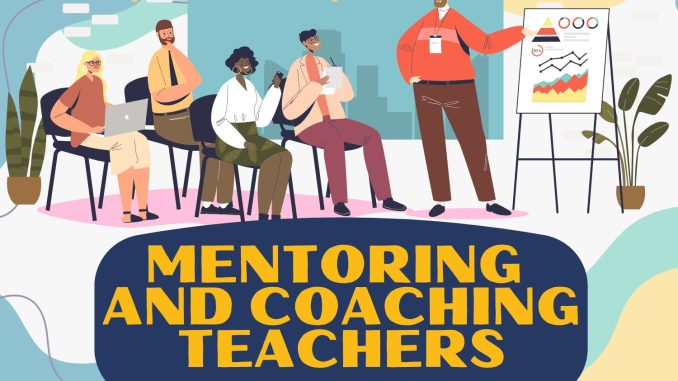
In the evolving landscape of education and professional development, the role of the teacher has expanded far beyond the traditional boundaries of instruction. Today, teachers are increasingly seen not just as conveyors of knowledge, but as mentors and coaches—figures who guide, inspire, and support learners through complex journeys of growth. This shift reflects a deeper understanding of how people learn and develop, and it aligns closely with the needs of modern organizations that value adaptability, emotional intelligence, and continuous improvement. When teachers embrace the dual role of mentor and coach, they become catalysts for transformation, both in the classroom and in the workplace.
Mentorship in teaching is fundamentally about relationship. It’s the process of building trust, offering guidance, and sharing experience in a way that empowers the learner. A mentor doesn’t just answer questions—they help learners ask better ones. They provide perspective, challenge assumptions, and encourage reflection. In a business context, this might look like a senior professional helping a junior colleague navigate the nuances of client communication, or a team leader supporting a new hire in understanding company culture. The teacher as mentor brings empathy and insight to these interactions, creating a safe space for growth and exploration.
Coaching, while closely related, brings a different energy to the teacher’s role. It’s more focused, goal-oriented, and often performance-driven. A coach helps learners identify specific areas for improvement, set measurable goals, and develop strategies to achieve them. This approach is particularly valuable in professional settings where outcomes matter and feedback is essential. For example, a teacher acting as a coach might work with an employee to improve presentation skills, offering targeted exercises, constructive critique, and encouragement. The coaching relationship is built on accountability and progress, but it also requires sensitivity and support.
What makes the teacher uniquely suited to these roles is their deep understanding of learning processes. Teachers know how to scaffold knowledge, how to differentiate instruction, and how to adapt to diverse needs. These skills translate seamlessly into mentoring and coaching. They allow the teacher to meet learners where they are, to recognize potential, and to nurture it with care and precision. In business environments, where learning is often informal and fast-paced, this expertise is invaluable. It ensures that development is not just reactive but intentional, not just transactional but transformative.
The impact of teachers as mentors and coaches is particularly evident in leadership development. Emerging leaders often face challenges that are not purely technical but deeply personal—confidence, communication, decision-making, and resilience. A teacher who steps into the role of mentor or coach can help these individuals navigate uncertainty, clarify their values, and build the skills they need to lead effectively. This kind of support goes beyond training; it’s about shaping character and cultivating wisdom. It’s about helping people become not just better professionals but better humans.
One of the most powerful aspects of mentoring and coaching is the emphasis on dialogue. Unlike traditional teaching, which can sometimes be one-directional, mentoring and coaching thrive on conversation. They invite questions, stories, and shared reflection. This creates a dynamic learning environment where both teacher and learner grow together. In business, this can lead to stronger teams, deeper engagement, and a culture of learning that permeates the organization. When people feel heard, supported, and challenged, they are more likely to take risks, embrace change, and pursue excellence.
Of course, stepping into the role of mentor or coach requires a shift in mindset. It’s not about having all the answers—it’s about asking the right questions. It’s not about directing—it’s about guiding. Teachers who embrace this shift often find that their influence deepens. They become trusted advisors, respected colleagues, and valued partners in growth. Their work becomes less about delivering content and more about facilitating discovery. This is especially important in today’s business world, where agility and innovation are prized, and where learning is a continuous, collaborative process.
The teacher as mentor and coach also plays a crucial role in fostering inclusion and equity. By building relationships, recognizing individual strengths, and addressing barriers to learning, they help create environments where everyone can thrive. This is not just a moral imperative—it’s a strategic one. Diverse teams perform better, innovate more, and adapt faster. Teachers who mentor and coach with an inclusive lens contribute to this success by ensuring that all voices are heard and all talents are nurtured.
Ultimately, the transformation of the teacher into a mentor and coach reflects a broader shift in how we think about learning and development. It’s a move away from rigid structures and toward human-centered approaches. It’s a recognition that growth is not just about acquiring knowledge but about becoming more capable, more confident, and more connected. In business, this translates into stronger performance, deeper engagement, and a culture that values people as much as it values results.
As organizations continue to navigate complexity and change, the need for teachers who can mentor and coach will only grow. These professionals bring not just expertise but heart. They understand that learning is a journey, and they walk alongside others with wisdom, humility, and care. In doing so, they help build workplaces that are not only smarter but also kinder, not only more productive but also more human.
Sources: